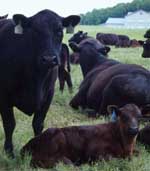|
| |
Connective
Tissue
Connective tissue holds the animal body together
and supports the cells and other tissues.
Functions of connective tissue
 | support - Some connective tissue cells
produce non-living intercellular substances such as fibers, that
support other tissues and hold them together.
|
 | storage - Many useful substances, such
as lipid, calcium and water are stored in connective
tissue.
|
 | transport - Blood, the ultimate
transport medium in the body, is a fluid connective tissue. Also,
nutrients and wastes moving between the blood and the body's cells
pass through connective tissue.
|
 | defense - many kinds of connective
tissues act as physical barriers to help protect the body. The
process of inflammation, which is the body's reaction to injury,
takes place largely in the connective tissue.
|
 | repair - Many types of connective
tissue have a great capacity for regeneration after injury. If a
poor-regenerating tissue in the body is injured, the body often
fills the defect with connective tissue.
|
Types of connective tissue
|





